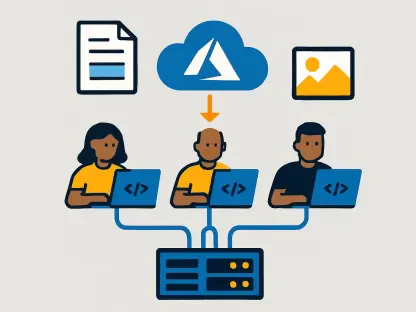The integration of automation into document workflows has become a paramount consideration for organizations striving to optimize efficiency and adaptability. With the evolution of technology, there is a growing trend where businesses are reimagining traditional document processes into streamlined, automated systems. This transformation is driven by the need to reduce the burden of manual operations, which often result in errors and inefficiencies. As technology advances, more sophisticated tools are being utilized to enhance business operations and maintain a competitive edge in the fast-paced market. The ability to handle a multitude of documents with precision and speed is crucial, and adopting automation offers remarkable benefits. Automated document workflows present significant advantages that promise not only enhanced productivity but also a reduction in operational costs, leading enterprises to adopt these solutions eagerly. Embracing these trends equips companies to navigate the complex landscape of contemporary document management, paving the way for smarter, more innovative practices that align with the technological progress of today’s world.
Role of Machine Learning and Artificial Intelligence
The ascent of artificial intelligence and machine learning in document workflows portrays an exciting advancement for businesses seeking greater efficiency in data management. These technologies exhibit the capacity to revolutionize document classification and retrieval, enabling businesses to categorize myriad document types seamlessly. With AI and machine learning, organizations can efficiently process contracts, receipts, invoices, and other critical documents, optimizing the search and retrieval processes. By employing AI-driven systems, businesses significantly enhance visibility, ensuring swift access to pertinent information without the complications that arise from manual categorization. This capability not only expedites task completion but also alleviates the probability of errors that can hinder operations. The use of AI-based search engines bolstered by unified data repositories further empowers users, facilitating rapid retrieval of required documents by simplifying search operations. The result is a comprehensive, structured workflow that sees a significant reduction in errors, thus enabling employees to focus on more strategic tasks essential to a company’s growth and success.
Cloud Computing: Elevating Efficiency and Collaboration
Cloud computing stands as a cornerstone technology in the automation of document workflows, offering innovative methods for managing data that remarkably enhance operational capabilities. The role of cloud solutions in transforming data storage and accessibility transcends traditional bottlenecks, allowing organizations to leverage remote access to critical documents across global teams and time zones. This democratization of information fosters real-time collaboration, permitting cross-functional teams to work effectively in unison irrespective of their geographic location, effectively accelerating project timelines and boosting productivity. The scalability of cloud platforms serves as a pivotal advantage, enabling businesses to expand capabilities in response to rising data demands without incurring prohibitive costs associated with physical storage infrastructure. By eliminating reliance on costly hardware, cloud solutions bring a dynamic, streamlined approach to managing data, delivering immediate returns on investment. As organizations continue to embrace cloud computing, the synergy between technological proficiency and operational efficiency becomes apparent, providing a competitive advantage in an increasingly digital business environment.
Advancements in IoT and Robotic Process Automation
The integration of Internet of Things (IoT) technology into document workflows heralds a new era of enhanced connectivity and automation among business systems and processes. IoT devices facilitate seamless document scanning and routing, ushering in a level of efficiency that simplifies data handling remarkably. By enabling automatic routing of documents to designated personnel, IoT-enabled devices amplify workflow productivity, ensuring timely and accurate processing. Additionally, the real-time tracking capabilities offered by IoT further enhance visibility, allowing users to retrieve documents based on specific criteria such as creation or storage dates with unprecedented ease. Similarly, robotic process automation (RPA) stands as a transformative force in this landscape, employing software robots to emulate human activities in managing repetitive tasks. RPA technology streamlines document processing and data management, alleviating manual workloads and ensuring accuracy in data manipulation. Automated workflows under RPA governance not only support compliance with industry regulations but also reduce storage costs, fostering a coherent and accessible archiving system for enterprises.
Blockchain: Safeguarding Document Integrity
Blockchain technology is evolving as a quintessential element in securing and managing document workflows, with its distinctive features drastically enhancing security measures. The adoption of blockchain protocols in document exchanges introduces unparalleled levels of security, eliminating vulnerabilities associated with traditional data transfer methods. By maintaining the integrity of document exchanges and minimizing the risk of breaches, blockchain technology protects sensitive information during transmission, thereby instilling operational confidence. The transparency afforded by blockchain also serves an essential role in document management, enabling organizations to trace modifications and track access histories meticulously. This level of monitoring ensures that only authorized personnel interact with sensitive data, fortifying privacy and compliance. Blockchain’s immutable record-keeping capability offers undeniable benefits, further affirming its place as a robust safeguard in document management systems. As more businesses embrace blockchain solutions, the reliability and security of document workflows are significantly heightened, poised to redefine best practices in secure data handling.
Embracing Automation for Future Success
The integration of automation in document workflows is now a critical focus for organizations aiming to boost efficiency and adaptability. With technological advancements, businesses are moving away from traditional document handling towards streamlined, automated systems. This shift is primarily due to the need to minimize the burdens of manual tasks, which often lead to errors and inefficiencies. More advanced tools are now available, helping businesses enhance their operations and stay competitive in today’s rapidly evolving market. Effectively managing numerous documents with speed and accuracy is essential, and automation offers substantial benefits. Automating document workflows significantly boosts productivity and decreases operational costs, which explains the eagerness of enterprises to adopt these technologies. By embracing these innovations, companies are better equipped to tackle the complexities of modern document management, setting the stage for smarter and more innovative practices that align with today’s technological advancements.









